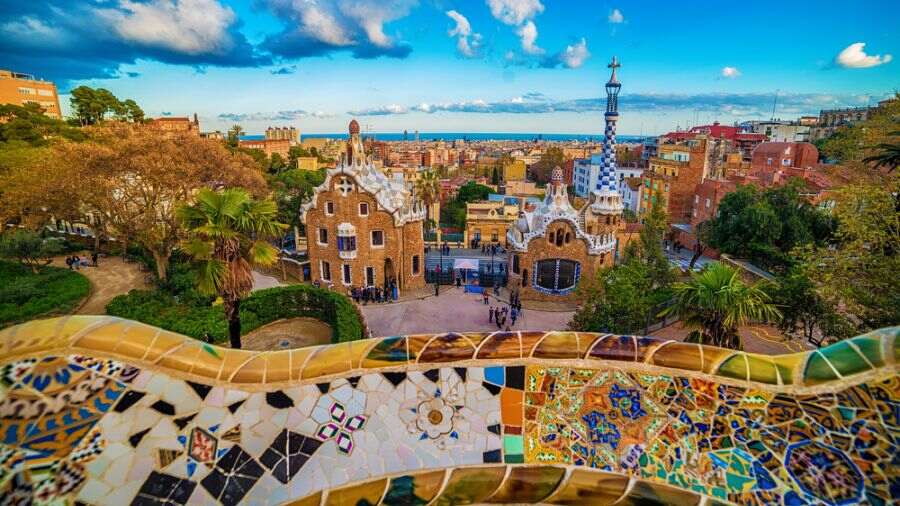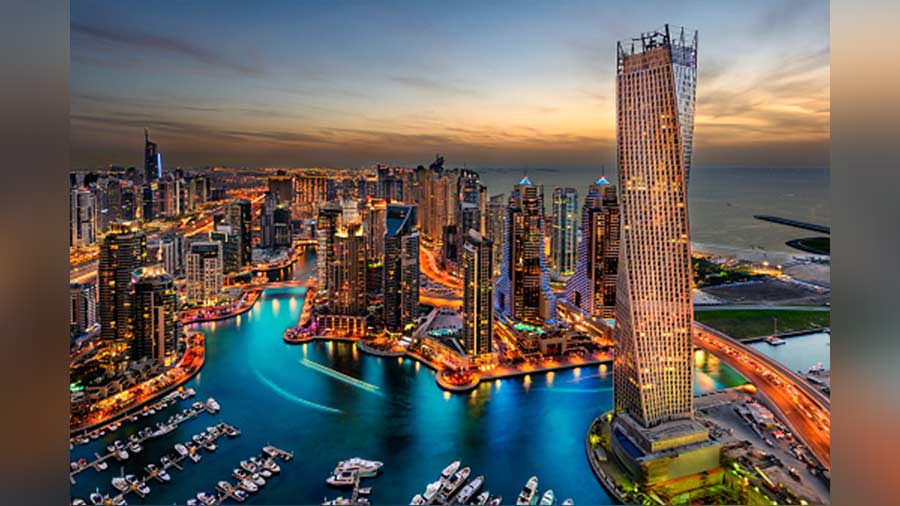For Catalan architect Antoni Gaudi, Barcelona was a canvas with endless possibilities. The city was also his muse, where the 19th-century artist created whimsical, bold structures blending Gothic and Art Nouveau with Expressionism crafting architectural masterpieces.
If Spain, particularly Barcelona, is on your Europe travel list, make sure to take some time out to experience the Antoni Gaudi trail in the Catalan capital.
La Sagrada Família Basilica
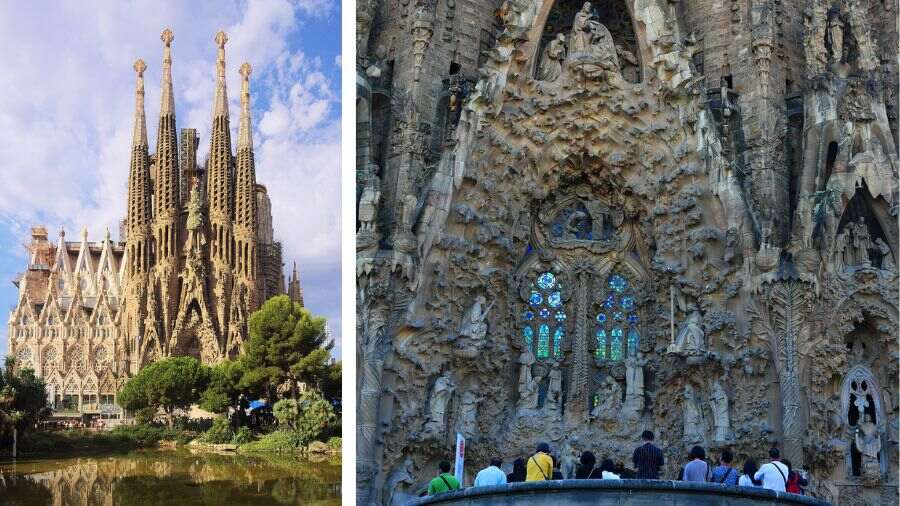
The facade of La Sagrada Família Basilica has Gothic elements and Gaudi’s unique brand of bizarre Wikimedia Commons; Sugato Mukherjee
The proverbial Gaudi trail starts at La Sagrada Família, the master’s most ambitious, and longest-running active project on the planet. Started in 1882, the building has been an active construction project for over 135 years, and expected to be complete in 2026!
A staunch Catholic, Gaudi wanted to visually chronicle historical events in the Bible through his masterpiece. He conceived 18 towers, one each for the 12 apostles, four for the evangelists, one for Mother Mary, and the last for Jesus. However, La Sagrada Família defies everything in the history of cathedral architecture. The abstract, colossal facade with towers reaching for the sky had drawn much flak and criticism. George Orwell, the celebrated novelist, had dubbed it “one of the most hideous buildings in the world.” Salvador Dalí had said Sagrada Família possessed a “terrifying and edible beauty.” and opined that it should be kept under a glass dome.

Inside La Sagrada Família Sugato Mukherjee
The facade, which has elements from Gaudi’s unique brand of bizarre — an amalgamation of Spanish Gothic, Catalan modernism, Art Nouveau and more with angular sculptures, smooth corbelling and other elements — does not even prepare you for the interiors.
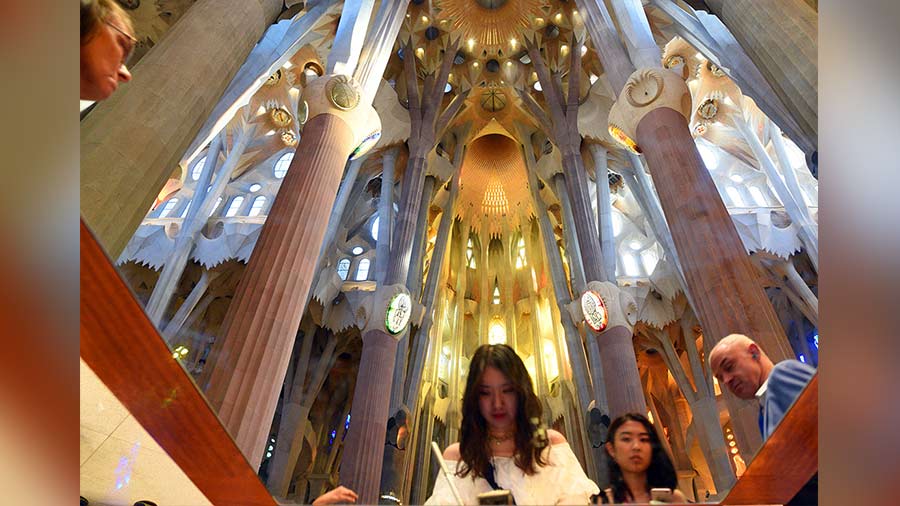
The best time to visit La Sagrada Familia is late afternoons, when you can see the play of light Sugato Mukherjee
A whimsical symphony of ceramics, stained glass, wrought ironwork, forging and carpentry result in with twisted, tree-trunk-like columns, spiral staircases and a dazzlingly kaleidoscopic vaulted ceiling. When the slant rays of the sun stream through the stained-glass windows in late afternoons, Sagrada Família turns ethereal, especially if it is at the time when the church music sounds.
Casa Batlló
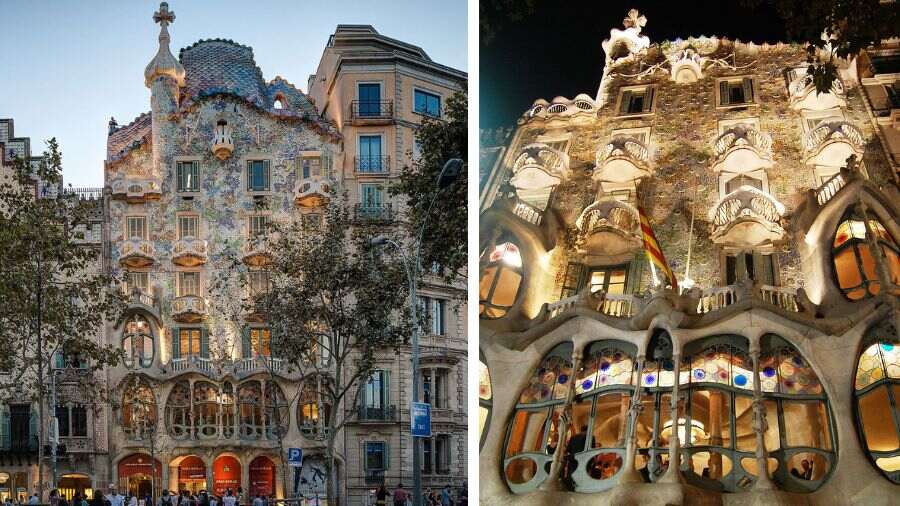
A UNESCO World Heritage Site, Casa Batlló is referred to as the ‘house of bones’ in local parlance Wikimedia Commons
A naturalist to the core, Antoni Gaudi had famously said, “There are no straight lines or sharp corners in nature. Therefore, buildings must have no straight lines or sharp corners.” Nowhere is this design philosophy more evident than Casa Batlló, a UNESCO World Heritage Site, Barcelona icon, and one of the architect’s most famous works. The facade of Casa Batllo looks like it has been made from skulls and bones and the natives of the city call it Casa dels Ossos (House of Bones) for its visceral, organic appearance. The ‘skulls’ are the rounded balconies and the ‘bones’ are the supporting pillars.
Commissioned by wealthy aristocrat Josep Batllo, Gaudi redesigned a previously built house in 1904 and Casa Batlló has undergone several redesigns and refurbishments since. The exterior has a multi-hued mosaic made with broken ceramic tiles and the arched roof resembles the back of a dragon. The irregular and differently sized windows were designed in an ingenious way to ensure uniform ambient light into each room of the house. Skylights resembling tortoise shells, vaulted walls in varying curves and the unique ribcage design of the loft that contains a series of 60 catenary arches make this house look like something straight out of a dream or a dark fairytale. The roof terrace, decorated with four chimney stacks, commands a partial view of the La Sagrada Família, with its spires visible over newer buildings. It is worthwhile to keep a few minutes of your explorations of the vibrant Eixample district at night, to watch Casa Batlló when it is illuminated.
Casa Milà

The stone facade earned Casa Milà the nickname 'La Pedrera' (Stone Quarry) Wikimedia Commons
Casa Milà was the second building on the busy La Passeig de Gràcia commissioned to Gaudi in the early 20th century, along with Casa Batlló. It was originally intended to be constructed as a dedication to Virgin Mary, but owner Pere Milà i Camps thought it would be a bit risky to have any religious references associated with this avant-garde piece of art. The architecture bears the signature stamp of Gaudi’s raw creativity with its series of curvy, cavern-shaped wrought iron balconies jutting across the facade — a harmonious mass of 6,000 stone blocks. The stone facade earned Casa Milà the nickname La Pedrera (Stone Quarry). The interiors also bear the hallmark of Gaudi’s inimitable style with breezy courtyards, ornate ceilings and undulating tapestries, but the most impressive part is the roof terrace that feels like an open-air museum with its chimneys and ventilation towers resembling abstract sculptures.
Park Güell
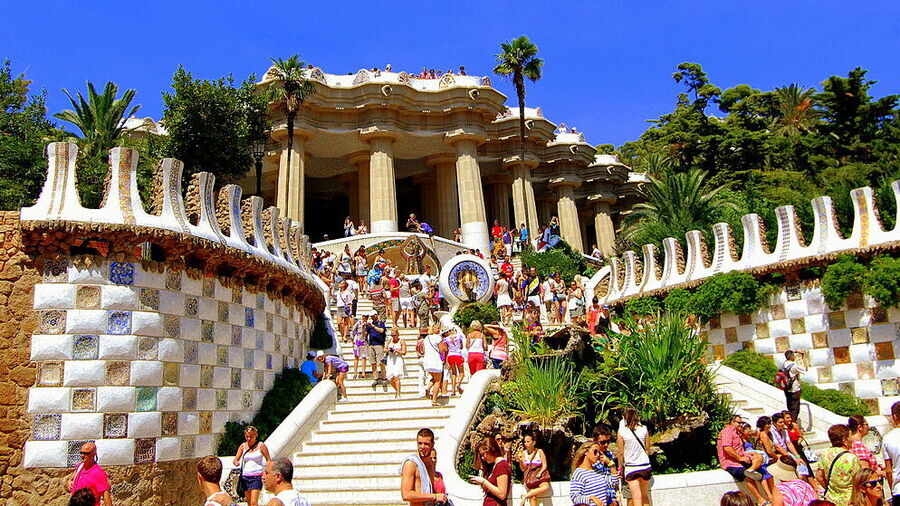
Park Güell was intended to house 60 luxury plots for elite Barcelonans, perched amid a Gaudi-style landscaped garden Wikimedia Commons
Completed in 1900 for Count Eusebi Güell, Park Güell (or Parc Güell) was initially estimated to house 60 luxury plots for elite Barcelonans, perched amid a Gaudi-style landscaped garden with sweeping views of the Catalan capital. However, only two houses were built, one of which became Gaudi’s own residence. Eccentric stone structures, organic and elemental designs, and buildings with the trencadis (surfaces covered with irregular ceramic pieces) underscore Antoni Gaudi’s signature style at Park Güell, a leafy expanse Carmel Hill strewn.
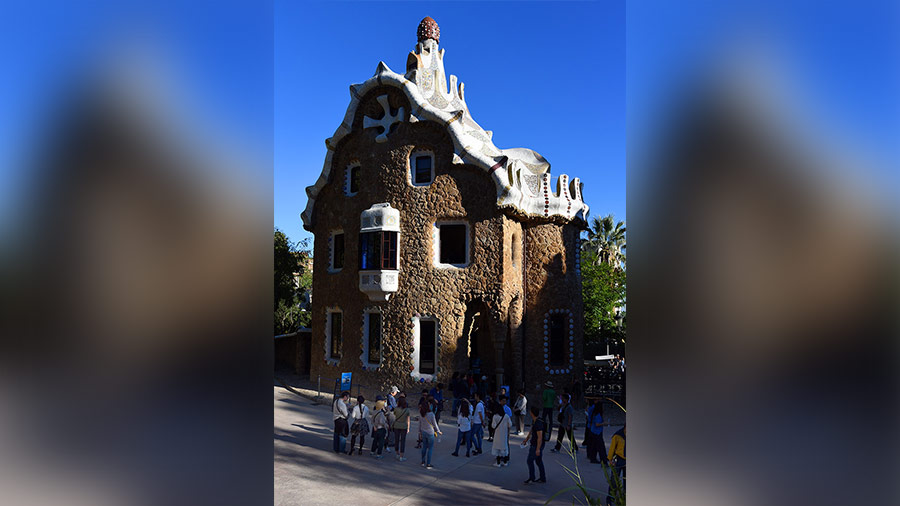
Only two houses in Park Güell were completed and one became Gaudi’s own residence Sugato Mukherjee
The iconic Gaudi dragon, covered in mosaics, fronts a colonnaded hypostyle hall that features an ingenious way of rainwater harvesting. The terrace with serpentine shapes is ideal for an iconic view of the city rolling out before you in myriad shapes and colours, with the Gaudi creations forming a surreal foreground. Located at one of the Park Güell’s entrances, the Gaudí House-Museum, which was the artist’s residence for almost two decades before his death in 1925, features a collection of quirky furniture and objects designed by Gaudi.
Casa Vicens

Casa Vicens is considered to be Gaudi’s first foray into modernism Wikimedia Commons
While the quintessential Gaudi trail can be covered with the first four iconic creations, for a true Gaudi aficionado, Casa Vicens in the Gràcia neighbourhood of Barcelona can be another pit stop. Constructed in the 1880s during the earliest phase of Gaudi’s career, this is considered to be his first foray into modernism. The melange of rainbow hues, the angular exterior, and the oriental and Moorish elements delicately woven into the architectural style collectively point towards a genius in the making, whom many of his peers and contemporaries held with disdain; but who is now heralded as a maverick maestro in the history of architecture.
Sugato Mukherjee has bylines in BBC, The Globe and Mail, National Geographic Traveller, Al Jazeera, Deutsche Welle and several inflight magazines. His coffee table book on Ladakh has received critical acclaim. Sugato's work on the sulphur miners of East Java was awarded distinctions by UNESCO. He writes on travel, culture, environment and food.
